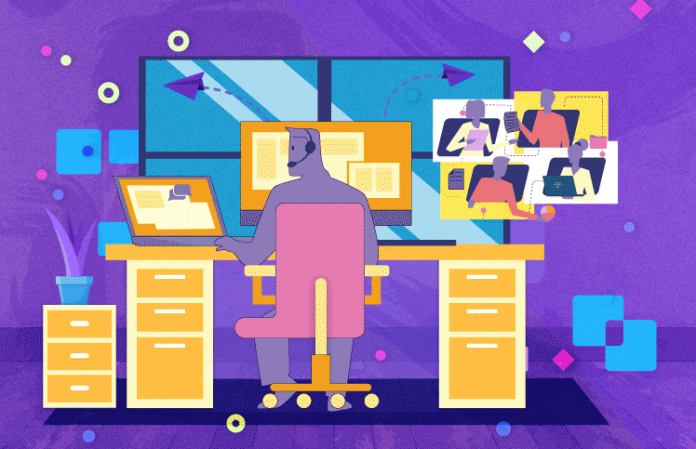
The following Q&A is part of a series on creating a sustainable work-from-home contact center. Each post examines a vital technology that supports contact centers in the transition to a permanent remote-work model. Below, ProcedureFlow’s Amanda Verner discusses the benefits of providing remote contact center agents with step-by-step visual guidance to help them navigate complex scenarios when assisting callers. She also offers her thoughts for making a successful transition to a permanent WFH model.
AMANDA VERNER
Senior Marketing Manager, ProcedureFlow
ProcedureFlow
Q. What WFH challenge(s) does it solve?
Training new-hires without the luxury of a classroom or nesting area makes it extremely challenging for new employees to learn and drives lengthy training and onboarding times. This not only increases operating costs, but also prevents agents from performing to the best of their ability. ProcedureFlow creates visual contact scenarios that employees can navigate through in training that mirror what they’ll encounter on the job. This enables contact centers to reduce training time by 75% and helps agents to start assisting customers sooner with confidence.
Q. How does it add value for end customers?
ProcedureFlow transforms contact center operations and helps thousands of end-users better serve their customers. Contact centers that use ProcedureFlow have seen 12% lower AHT, 40% fewer escalations, and 11% lower operating costs. Additionally, ProcedureFlow’s scenario-based learning enables 75% faster training times. Combining these improvements empowers contact centers to create a better employee and customer experience.
Q. Tips for getting the most out of this tool?
Contact centers can get the most out of ProcedureFlow by encouraging their agents to use it daily. This prepares agents and gives them confidence for whatever contact scenario comes their way. This helps maintain consistency across teams and ensures that agents are working with the most accurate and up-to-date information. Leveraging this strategy results in agents creating the best possible customer experience.
Q. Advice for making a successful transition to a permanent WFH model?
The traditional lecture-style training model is an ineffective way for new employees to learn. Agents are unable to focus on video calls for eight hours a day in training and have difficulty retaining new information. Hands-on learning and scenario-based training is a more effective way to keep agents engaged and better prepares them for work post-training. Contact center leaders who want to transition to a permanent WFH model need to innovate their training and accommodate the new needs of a remote workforce.
Next up in the WFH tech series: Real-Time Agent Guidance and Support




